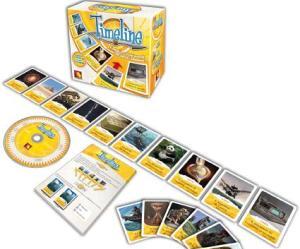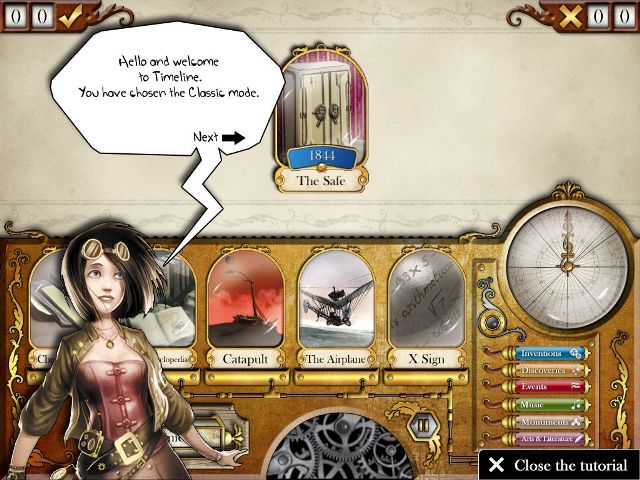Timeline Board Game Review
 Game: Timeline
Game: Timeline
Manufactured by: Asmodee
Published by: Esdevium Games
Players: 1 – 8
Price: £12.99
More often than not, trivia games are their own worst enemy, especially when played with people who just aren’t trivia buffs. The pacing suffers and people get frustrated or embarrassed if they don’t know an answer to a seemingly simple question, and there’s always one person who knows when everything was invented, what month of what year every song was released and the first names of all the Popes. I hate that person.
So a boardgame such as Timeline feels almost like an antidote, and certainly comes as a refreshing change when played together with the average family who don’t read an encyclopaedia at bed time or watch the Discovery Channel over breakfast.
It’s part card game, part trivia game and part guessing game, as each player is dealt a hand of picture cards featuring images of historical events, famous figures and inventions. On one side is the image itself, and on the other is the image plus the date on which it occurred / came into being. Starting with the youngest player (for the sake of squeezing some kind of theme into proceedings), each person is required to lay one card in a line, date side down – the catch is that you must lay your cards in chronological order. If you get it right, you lose that card; get it wrong, and you have to take another. The winner is the first player to get rid of all their cards. Simple, right?
Well, no, not really. In theory it sounds pretty straightforward, and indeed some of the cards are no-brainers. We all know that the wheel came before the steam engine, for example, but less people will know whether the light bulb was invented before spectacles, or vice versa. The more cards you lay, the harder it gets to put your next selection into the correct position, especially when you hit upon the 19th and early 20th Century when science enjoyed a huge period of advancement.

It can still be frustrating if you’re dealt a bunch of cards that you simply don’t know, but often an educated guess will see you through. Perhaps the best thing about Timeline is that it’s a very educational game, so playing with younger children has its own benefits in that they can learn and have fun at the same time.
The cards themselves are beautifully drawn, with a consistent art style across all 290 of them. It adds an element of grandeur that wouldn’t be present were they all just decorated with stock photographs of machinery or random artists’ impressions of historic events.
Timeline also ships with a version of the game on CD-Rom for PC or Mac. It’s the same basic premise, but it’s really designed to play on your own. It doesn’t take the fun out playing, but the cards look way less effective on-screen than when you’re laying them out of your own hands. On the plus side, the CD-ROM version has some added extras. For starters, there’s a Challenge mode that tasks you to complete a certain timeline within 3 minutes (trickier than it sounds), but there’s also a Library that, rather brilliantly, provides information on many of the events contained in the game.
VERDICT: Timeline is one of those rare trivia games that surprises you more by revealing what you know than what you don’t. As a family game, it excels because of the simplicity of its premise, its educational nature and the wonderful artwork. The average game won’t take longer than 20 minutes to half an hour, even when played with the maximum 8 players, and you have to wonder about the longevity of it once you’ve played it a few times and committed many of the dates to memory, but it’s an enjoyable aside that raised more than a few chuckles when I sat down and played it with my wife and a few of our friends. If you’ve got a young family, Timeline is highly recommended – and you never know, you might just learn something.




